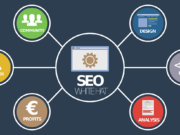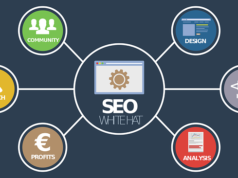With modern technology, the difference between marketing and sales has become blurrier than ever. It’s difficult for companies to know which tools belong to which department and how to allocate resources.
As a digital marketing and technology company, we have seen this confusion in other companies first-hand. We know the nuances that separate various tools and how they can be utilized. Here is a quick guide to help you grasp the key differences in the changing world of marketing and sales.
What is marketing?
Marketing used to mean one-way communication from company to consumer. Companies would advertise on billboards or magazines and consumers would look at them directly. This traditional style of marketing is no longer the most effective marketing. With the development of new technologies, consumers are now able to communicate directly with companies, changing marketing to back and forth discussion. Social media, for example, allows companies to join conversations between consumers. Today, tools which try to control and frame user behaviour falls under the marketing umbrella.
Marketing speaks to large groups of people. A television ad could be viewed by millions. However, there are now digital tools which allow marketers to segment populations and deliver tailored content. The end goal of this is to identify the people interested in a company’s product or service. It is only once these leads have been identified that they will be passed to sales.

Traditional marketing is no longer the most effective. New digital tools allow marketers to deliver tailored content.

Customer relationships are crucial in sales. With global connectivity, sales can communicate to a larger amount of people.
What is sales?
Sales have always involved 2-way communication between buyer and seller, with a human element which can’t be ignored. The customer relationship is crucial in sales. Customer relationship management (CRM) systems are squarely in the field of sales and help manage and cultivate business relationships.
Traditionally, sales dealt with small numbers of people. A salesperson would have direct conversations with each buyer about the product and their needs. Today, due to global connectivity, salespeople are able to talk to a larger amounts of people. In addition, tracking tools inform salespeople when leads click on their emails. Workflow tools automatically generate email template processes when leads perform certain behaviors. For example, a notification to make a sales call may be sent out when a lead opens an email and downloads the attachment.
This development means that sales people target a larger audience, and for within that audience are able to identify those who are most likely to buy their product. So not only does this mean an increase in range, but also a more defined target, better utilizing sales people’s time.
There are some tools that fall into both camps. Where they belong depends on how they are used. For example, analytic tools can be used to gather data on marketing automation software as well as sales workflow systems. The best thing a company can do is sit down with both the marketing and sales departments and decide where each tool is best utilized.
Without clarity on which tools to use, there may be role overlaps. Data may be present in different places such as analytics, a CRM system, a sales acceleration tool, and more. This makes it difficult to accurately picture of what’s really going on. In these cases, it is a good idea to have one centralized system for both sales and marketing so they are not both doing the same work.

With any business relationship, your outsourcing company is your partner – not your enemy, and it helps to work with, not against each other. Based on our experiences at Venuiti, maintaining a well-communicated project ensures a healthy business relationship. Make sure you apply these tips in your next project and you’ll ensure a smooth and successful outcome.

















